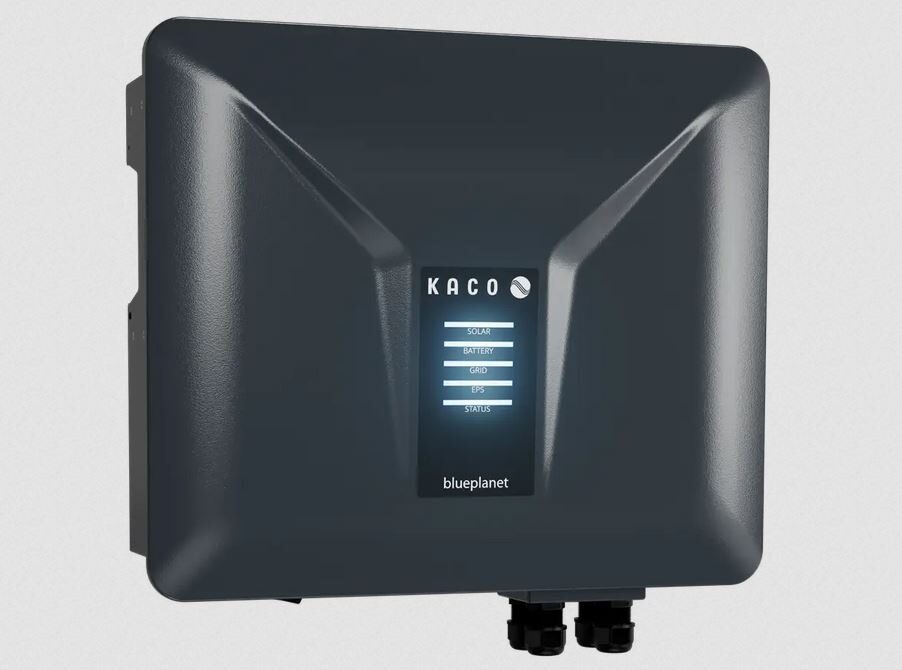German government funding for renewable energy expected tor each €18 billion in 2025
October 28, 2024
The costs for renewable energy funding this year will be higher than forecast, due in part to the many hours with negative spot market prices on the electricity exchange. A new report expects the trend of high costs to continue until 2029.
October 28, 2024
From pv magazine Germany
The Energy Economics Institute (EWI) at the University of Cologne has published its medium-term forecast for Germany’s Renewable Energy Sources Act (EEG) in which it estimates funding to reach more than €18 billion ($19.48 billion) in 2025 — an increase of almost €1 billion compared to 2023.
Government costs for renewable energy sources in 2025 could be lower than those of the current year, according to the EWI medium-term forecast.
” data-medium-file=”https://www.pv-magazine.com/wp-content/uploads/2024/10/Grafik_2_en-600×356.png” data-large-file=”https://www.pv-magazine.com/wp-content/uploads/2024/10/Grafik_2_en-1200×713.png” tabindex=”0″ role=”button” class=”wp-image-275230 size-medium” src=”https://www.pv-magazine.com/wp-content/uploads/2024/10/Grafik_2_en-600×356.png” alt width=”600″ height=”356″ srcset=”https://www.pv-magazine.com/wp-content/uploads/2024/10/Grafik_2_en-600×356.png 600w, https://www.pv-magazine.com/wp-content/uploads/2024/10/Grafik_2_en-1200×713.png 1200w, https://www.pv-magazine.com/wp-content/uploads/2024/10/Grafik_2_en-768×456.png 768w, https://www.pv-magazine.com/wp-content/uploads/2024/10/Grafik_2_en-1536×912.png 1536w, https://www.pv-magazine.com/wp-content/uploads/2024/10/Grafik_2_en-2048×1217.png 2048w” sizes=”(max-width: 600px) 100vw, 600px”>
Source: EWI
What the Cologne researchers do not write is that it would probably be a decrease compared to this year. In 2024, by the end of September, almost €15 billion had flowed from the federal budget to the transmission system operators in order to keep the EEG account balanced, as detailed on netztransparenz.de, the joint homepage of the transmission system operators. The financing requirements determined a year ago significantly underestimated the costs. They will probably be just under €20 billion, as can be seen from the EWI’s medium-term forecast.
The EWI’s medium-term forecast extends to 2029. The Cologne-based researchers expect generation capacity from renewable energy sources to roughly double to more than 300 GW by 2029, compared to 2023. Under average weather conditions, this would result in a generation volume of 380 TWh. “EEG subsidy payments could rise to almost €23 billion in the same period despite the fact that 22 GW of solar and wind energy plants will no longer be eligible for EEG subsidies with high remuneration rates by 2029,” the EWI stated.
The EWI expects the output of open-space PV systems to triple by 2029 compared to 2023.
” data-medium-file=”https://www.pv-magazine.com/wp-content/uploads/2024/10/Grafik_1_en-600×355.png” data-large-file=”https://www.pv-magazine.com/wp-content/uploads/2024/10/Grafik_1_en-1200×709.png” tabindex=”0″ role=”button” class=”size-medium wp-image-275232″ src=”https://www.pv-magazine.com/wp-content/uploads/2024/10/Grafik_1_en-600×355.png” alt width=”600″ height=”355″ srcset=”https://www.pv-magazine.com/wp-content/uploads/2024/10/Grafik_1_en-600×355.png 600w, https://www.pv-magazine.com/wp-content/uploads/2024/10/Grafik_1_en-1200×709.png 1200w, https://www.pv-magazine.com/wp-content/uploads/2024/10/Grafik_1_en-768×454.png 768w, https://www.pv-magazine.com/wp-content/uploads/2024/10/Grafik_1_en-1536×908.png 1536w, https://www.pv-magazine.com/wp-content/uploads/2024/10/Grafik_1_en-2048×1210.png 2048w” sizes=”(max-width: 600px) 100vw, 600px”>
Source: EWI
In the trend scenario, the one with the highest probability of occurrence, the EWI anticipates strong growth in installed capacity. “The greatest increase in assumed capacity is in open-space solar systems, whose expected installed capacity could more than triple by the end of 2029 compared to 2023,” said Fabian Arnold, project lead at EWI. The key factors behind that expected growth are falling technology costs and the regulatory framework, which has improved significantly, he added. Among those regulatory improvements are higher funding rates and tender volumes as well as the reduction of bureaucracy. In the scenario, EWI assumes an installed PV capacity of around 200 GW for 2029, almost 124 GW of which will come from open-space systems.
However, the increasing number of new installations is not the only factor for the rising EEG funding costs. A decline in expected market values is another important reason for the projected increase in EEG payments in the medium term, according to the EWI. As market values continue to fall, the difference to the promised subsidy levels increases and, in total, the costs for the EEG payments. “In particular, the market values of solar systems are falling in our simulation calculations due to the high level of simultaneity in their production. As a result, the subsidy payments via the EEG are increasing disproportionately to the expected expansion,” said Philip Schnaars, the EWI’s head of research area.
This content is protected by copyright and may not be reused. If you want to cooperate with us and would like to reuse some of our content, please contact: editors@pv-magazine.com.
Search
RECENT PRESS RELEASES
Related Post





